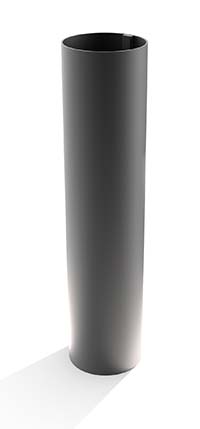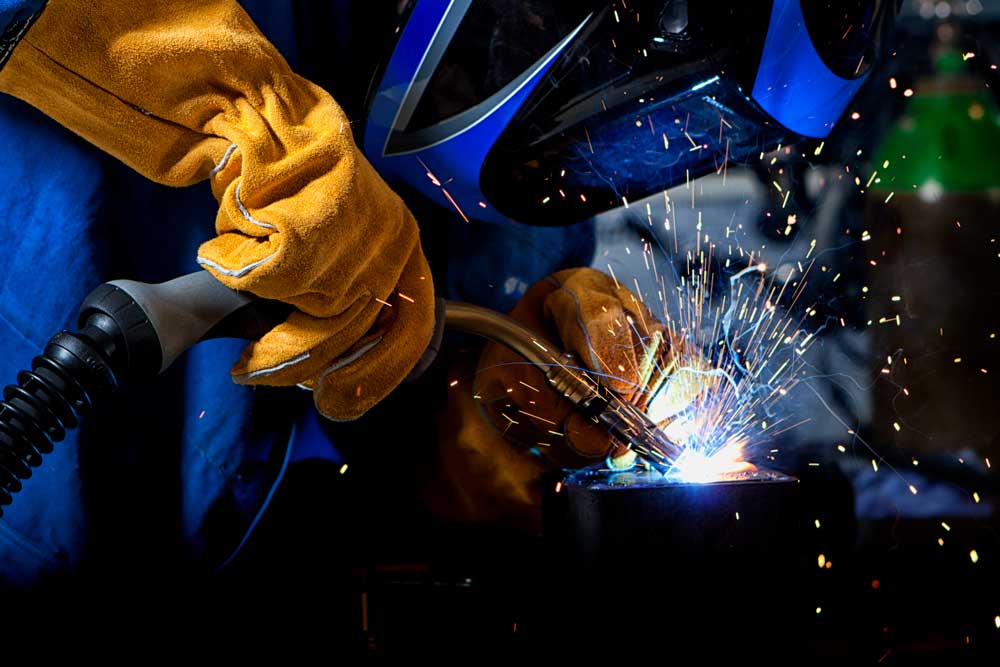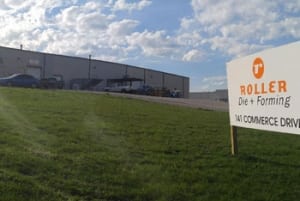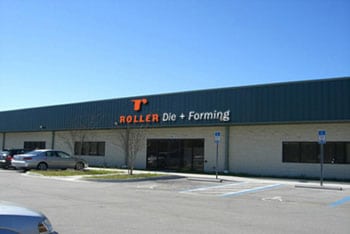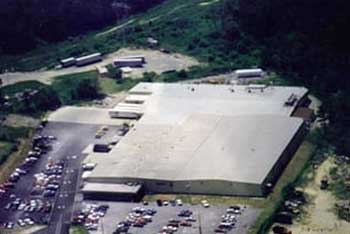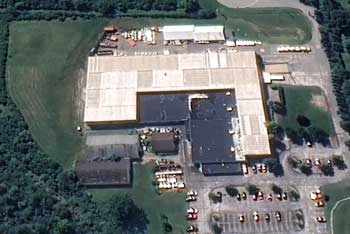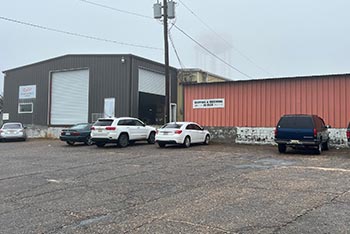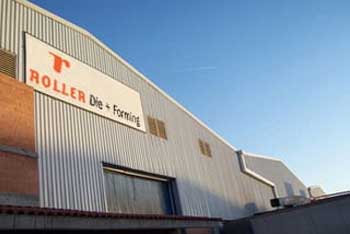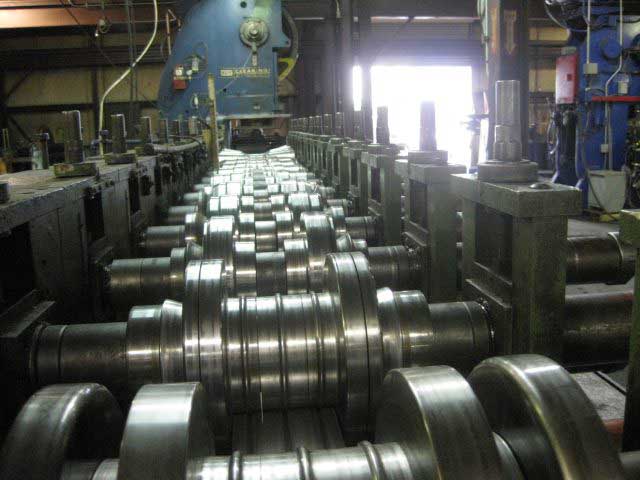Roll forming is a fascinating process that turns flat metal sheets into specific shapes by passing them through a series of rollers. It’s a highly efficient method, allowing manufacturers to produce complex designs with consistent quality. The process is versatile and can handle various metals, making it an ideal choice for different industries.
As we explore the intricacies of roll forming, you’ll better understand its benefits, the materials used, and how to ensure quality control. This guide aims to provide manufacturers with a comprehensive look at roll forming, from setup to the latest industry trends, helping you make informed decisions for your production needs.
What Is Roll Forming?
Roll forming is a continuous bending technique used to shape flat metal strips into long, uniform profiles. Imagine taking a flat piece of aluminum or steel and running it through a series of rollers. Each roller bends the metal a bit more until it reaches the desired shape. This process is fast, reliable, and produces parts with precise dimensions.
The main advantage of roll forming is its ability to produce high volumes of complex shapes without needing additional processes. This is why industries like automotive and construction prefer it for making parts such as roof panels, door frames, and structural supports. Roll forming can consistently create these shapes, ensuring each part matches the exact specifications.
By understanding roll forming, manufacturers can better appreciate its value in producing high-quality, cost-effective metal components. The technique’s efficiency helps streamline production and reduce waste, making it an essential process in modern manufacturing.
The Roll Forming Process Explained
The roll-forming process starts with a flat strip of metal, often called the “strip” or “coil stock.” This strip is fed into a roll forming machine, passing through a series of roller stations. Each station, also known as a “stand,” has a set of rollers that shape the metal by bending it slightly at each point.
Throughout the process, the metal remains in motion. Each roller in the series contributes to the final shape, bending the metal bit by bit until it forms the desired profile. The rollers are precisely positioned to ensure accurate shaping and maintain the strength of the metal without causing fractures or deformities.
The final stage involves cutting the roll-formed metal to the required lengths using a cut-off machine. This entire process is highly automated, allowing for consistent production and minimal human intervention. Understanding the roll forming process helps manufacturers see how this method can improve efficiency and product quality.
Common Materials Used in Roll Forming
Various metals can be used in the roll forming process, each offering unique characteristics that suit different applications. Here are some of the most commonly used materials:
1. Steel: Steel is the most frequently used material in roll forming. It offers high strength and durability, making it suitable for structural components and automotive parts. Both hot-rolled and cold-rolled steel are used, depending on the application.
2. Aluminum: Aluminum is lightweight and corrosion-resistant, which makes it ideal for aerospace, automotive, and construction industries. It is also easy to shape and can be used for aesthetic purposes like trim and paneling.
3. Copper: Copper’s excellent electrical conductivity makes it a preferred material for electrical components and wiring systems. It’s also used in roofing and gutter applications because of its durability and resistance to corrosion.
4. Stainless Steel: Known for its strength and resistance to rust and staining, stainless steel is used in applications where hygiene and cleanliness are critical, like in food processing and medical equipment.
Key Components of a Roll Forming Machine
A roll forming machine consists of several key components that shape metal strips into desired profiles. Understanding these components helps manufacturers optimize the roll forming process.
1. Decoiler: The process begins with a decoiler, which holds and unwinds the metal coil. This device ensures a steady feed of metal into the machine.
2. Straightener: This component ensures the metal strip is flat and free of bends before it enters the rollers. It prepares the metal for precise shaping.
3. Roller Stations: The heart of the roll forming machine, roller stations contain the rollers that bend and shape the metal. Each station performs a specific part of the bending process, and the number of stations varies depending on the complexity of the profile.
4. Cut-Off Machine: After the metal has gone through all the roller stations, the cut-off machine slices the continuous strip into specified lengths. This is usually done without stopping the motion of the strip.
5. Control System: Modern roll forming machines have computerized control systems that ensure precision and consistency. These systems can adjust roller positions and cutting lengths according to pre-set dimensions.
Benefits of Roll Forming for Manufacturers
Roll forming offers numerous benefits for manufacturers, making it a preferred method for shaping metals. One of the primary advantages is its efficiency. Roll forming can produce long lengths of metal parts at high speeds, which significantly boosts production rates. This is especially beneficial for industries needing large volumes of parts, such as automotive and construction.
Another benefit is the precision and consistency of the parts produced. Because the process is highly automated, each product comes out with exact dimensions and excellent structural integrity. This reduces the need for secondary operations like machining or welding, saving both time and money.
Roll forming also minimizes material waste compared to other metal shaping methods. Since the process involves bending rather than cutting, less scrap metal is generated. This not only saves on material costs but also supports environmental sustainability by reducing waste.
Types of Roll Formed Products
Roll forming is versatile and can create a wide array of products used in various industries. Here are some common types of roll-formed products:
1. Structural Components: These include steel beams, channels, and joists used in construction for building frames and support structures.
2. Automotive Parts: Roll forming produces car bodies, bumpers, and door frames, contributing to the automotive industry’s efficiency and safety standards.
3. Roof Panels: Roof panels and gutter systems for residential and commercial buildings benefit from roll forming’s ability to produce long, uniform sections.
4. Furniture Frames: Durable and stylish metal frames for desks, chairs, and shelving units in the furniture industry are often roll-formed.
5. Electrical Enclosures: Box enclosures and housings for electrical equipment rely on roll forming for their precise dimensions and consistency.
Quality Control in Roll Forming
Quality control is essential in roll forming to maintain product consistency and meet specifications. Here are some key practices for ensuring quality:
1. Regular Inspections: Conduct regular inspections of the equipment, including roller stations and cut-off machines. Look for signs of wear and tear and address them promptly.
2. Material Testing: Test the raw materials for consistency in thickness and composition. Variations can affect the final product’s quality and performance.
3. Inline Monitoring: Use sensors and cameras to monitor the roll forming process in real-time. These tools can detect any deviations and allow for immediate corrections.
4. Dimensional Checks: Measure the dimensions of the roll-formed products regularly to ensure they meet the required specifications. Use calipers, micrometers, or laser measuring systems for accuracy.
5. Documentation: Keep detailed records of all quality control measures and findings. This documentation aids in tracking performance over time and identifying recurring issues.
Cost Efficiency: Roll Forming vs. Other Metal Forming Methods
Roll forming is often more cost-efficient than other metal forming methods. One of the main reasons is material waste reduction. Unlike stamping or punching, roll forming bends the metal without cutting it, which means less scrap is produced. This translates into savings on raw material costs.
In terms of labor, roll forming is highly automated, reducing the need for manual intervention. Machines carry out most of the work, leading to lower labor costs and minimizing the risk of human error. This automation also allows for faster production rates, which boosts overall productivity and output.
Energy efficiency is another advantage. Roll forming machines generally consume less energy compared to press forming or extrusion, leading to lower operational costs. By evaluating these factors, manufacturers can see how roll forming offers cost benefits while maintaining high-quality production.
Innovations and Trends in Roll Forming Technology
Roll-forming technology is constantly evolving to meet the needs of modern manufacturers. One key innovation is the development of advanced control systems. These systems incorporate real-time monitoring and adjustments, improving accuracy and reducing defects. This leads to higher-quality products and less downtime for adjustments or repairs.
Another trend is the use of high-strength materials. With the increasing demand for lightweight but strong components, roll-forming machines are now capable of processing advanced high-strength steels and other durable alloys. This opens up new possibilities for industries like automotive and aerospace that require robust yet lightweight parts.
Automation and robotics have also made their way into roll forming, allowing for more complex shapes and profiles to be created with minimal human intervention. These innovations increase production efficiency and enhance worker safety by reducing the need for manual handling of materials.
How Roll Forming Supports Sustainable Manufacturing
Roll forming supports sustainable manufacturing in several ways. First, it reduces material waste. By bending metal instead of cutting it, roll forming minimizes the amount of scrap produced during the process. This reduction in waste contributes to more efficient use of resources and less environmental impact.
Energy efficiency is another significant benefit. Roll forming machines generally use less energy compared to other metal-forming methods such as stamping or extrusion. This is due to the continuous nature of the process, which requires less start-and-stop motion and results in lower overall energy consumption.
Roll forming also contributes to durability and longevity in products. Because the process creates strong, uniform parts, the end products tend to have longer lifespans and require less frequent replacement. This reduces the consumption of resources needed for producing new parts and helps in reducing waste.
Frequently Asked Questions About Roll Forming
1. What Metals Can Be Roll Formed?
– Common metals include steel, aluminum, copper, and stainless steel. The choice depends on the specific application requirements.
2. How Accurate Is Roll Forming?
– Roll forming is highly precise. Modern machines have advanced control systems to ensure each part meets exact specifications.
3. What Are the Typical Applications for Roll Forming?
– Applications range from automotive parts and construction materials to electrical enclosures and furniture frames.
4. How Does Roll Forming Compare to Stamping?
– Roll forming is generally more cost-effective, especially for long, continuous parts. It also produces less waste.
5. What Are the Maintenance Requirements?
– Regular inspections and adjustments are necessary. Keeping the rollers clean and free of wear ensures continuous, high-quality production.
Conclusion
Roll forming is an essential process for manufacturers looking to produce high-quality metal parts efficiently. Its benefits, such as reduced waste, cost efficiency, and precision, make it a valuable method in various industries. From creating automotive components to structural beams in construction, roll forming’s versatility cannot be overstated.
As technology advances, roll forming continues to evolve, offering even more advantages with innovations in materials and automation. This not only improves the manufacturing process but also supports sustainable practices by reducing energy consumption and material waste.
If you’re looking to leverage the benefits of roll forming for your manufacturing needs, consider partnering with us at Roller Die + Forming. Our expertise and advanced technology ensure top-notch quality and efficiency for all your roll forming projects. Contact us today to learn how we can help you optimize your production process.

